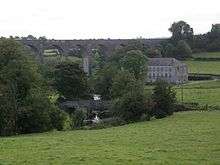Castleblayney, Keady and Armagh Railway
| Industry | railway |
|---|---|
| Fate | taken over |
| Successor | Great Northern Railway |
| Founded | 1903 |
| Defunct | 1957 |
| Headquarters | Ireland (later Northern Ireland) |
Area served |
County Armagh, County Monaghan |
| Castleblayney, Keady and Armagh Railway | ||||||||||||||||||||||||||||||||||||||||||||||||||||||||||||||||||||||||||||||||||||||||||||||||||||||||||||||||||||
|---|---|---|---|---|---|---|---|---|---|---|---|---|---|---|---|---|---|---|---|---|---|---|---|---|---|---|---|---|---|---|---|---|---|---|---|---|---|---|---|---|---|---|---|---|---|---|---|---|---|---|---|---|---|---|---|---|---|---|---|---|---|---|---|---|---|---|---|---|---|---|---|---|---|---|---|---|---|---|---|---|---|---|---|---|---|---|---|---|---|---|---|---|---|---|---|---|---|---|---|---|---|---|---|---|---|---|---|---|---|---|---|---|---|---|---|---|
| ||||||||||||||||||||||||||||||||||||||||||||||||||||||||||||||||||||||||||||||||||||||||||||||||||||||||||||||||||||
The Castleblayney, Keady and Armagh Railway (CK&A) was an Irish gauge 5 ft 3 in (1,600 mm) railway in Ulster. It linked Armagh in County Armagh with Castleblayney in County Monaghan. The Armagh – Keady section was opened in 1909 and closed in 1957. The Castleblayney – Keady section was opened in 1910 and closed in 1924.
History
In 1899 a Bill was presented to Parliament to build a railway linking Kingscourt on the Midland Great Western Railway (MGW) with Armagh on the Great Northern Railway (GNR). It was defeated.[1]
The next year Parliament passed an Act to incorporate the Kingscourt, Keady and Armagh Railway Company, but the new company was unable to begin construction. Instead it reached agreement with the GNR to build the 28-mile (45 km) section between Castleblayney and Armagh, and abandoned the planned section between Castleblayney and Kingscourt. A new bill in 1902 reincorporated it as the Castleblayney, Keady and Armagh Railway Company.[2]
Construction began in 1903 but the first services did not run until 31 May 1909, when the 10-mile (16 km) between Armagh and Keady was opened.[3] The 8-mile (13 km) section between Castleblayney and Keady was opened on 11 November 1910, and the GNR took over the company on 1 June 1911. The line attracted some freight but passenger traffic was light. Some passenger services were worked by a push–pull train formed of a single coach worked by a locomotive such as a BT class 4-4-0T dating from the 1880s.[4] Freight trains were commonly worked by UG class 0-6-0s.[5]
The Partition of Ireland in 1922 turned the Armagh–Monaghan county boundary between Creaghanroe and Carnagh into an international frontier that adversely affected traffic. The GNR closed the Castleblaney – Keady section on 10 August 1924[6] and withdrew passenger services from the Keady – Armagh section in 1932.[7] In 1957 the Government of Northern Ireland made the GNR close much of its remaining network in Northern Ireland, including the remaining section of the CKA.[8]
Features

The line's summit at Carnagh was 613 feet (187 m) above sea level, the highest place on the GNR.[5]
The 570-foot (170 m)–long[5] Tassagh Viaduct, north of Keady, is a composite. Its spandrels and parapets are stone, but its piers are reinforced concrete and the piers and the undersides of its 11 arches are faced with brick.[9] This is a substantial saving in weight and construction compared with earlier purely stone or brick viaducts.[9] The viaduct over the Callan River at Ballyards, by contrast, is faced entirely with stone.[10]
References
- ↑ McCutcheon 1983
- ↑ Arnold 1980
- ↑ Ferris 2003, p. 9.
- ↑ McCutcheon 1969, p. 56.
- 1 2 3 Ferris 2003, p. 84.
- ↑ Baker 1972, p. 46.
- ↑ Baker 1972, p. 66.
- ↑ Baker 1972, p. 207.
- 1 2 McCutcheon 1970, p. 43.
- ↑ McCutcheon 1970, p. 72.
Sources
- Arnold, Robert McCullough (1980). The Golden Years of the Great Northern Railway. Belfast: Blackstaff Press.
- Baker, Michael H.C (1972). Irish Railways since 1916. London: Ian Allan. pp. 46, 66. ISBN 0-7110-0282-7.
- Ferris, Tom (2003). The Great Northern Railway. An Irish Railway Pictorial. Leicester: Midland Publishing. pp. 9, 84. ISBN 1-85780-169-5.
- McCutcheon, Alan (1969). Ireland. Railway History in Pictures. 1. Newton Abbott: David & Charles. p. 56. ISBN 0-7153-4651-2.
- McCutcheon, Alan (1970). Ireland. Railway History in Pictures. 2. Newton Abbott: David & Charles. pp. 43, 72. ISBN 0-7153-4998-8.
- McCutcheon, William Alan (1983) [1980]. The Industrial Archaeology of Northern Ireland. Madison, NJ: Fairleigh Dickinson University Press for the Northern Ireland Department of the Environment. ISBN 0-8386-3125-8.